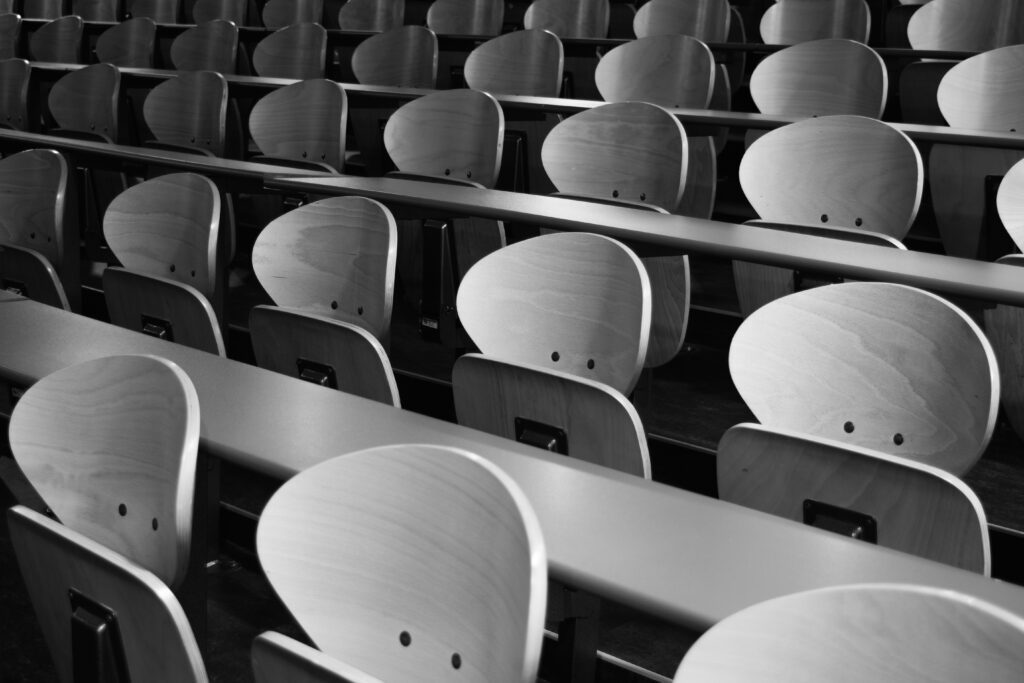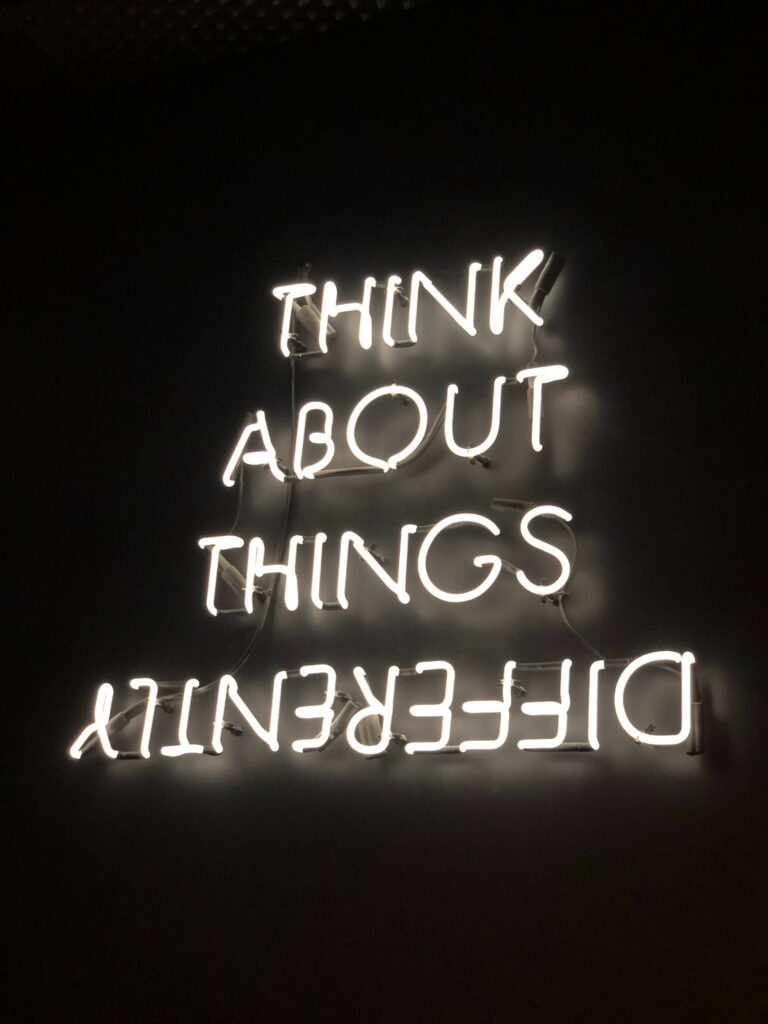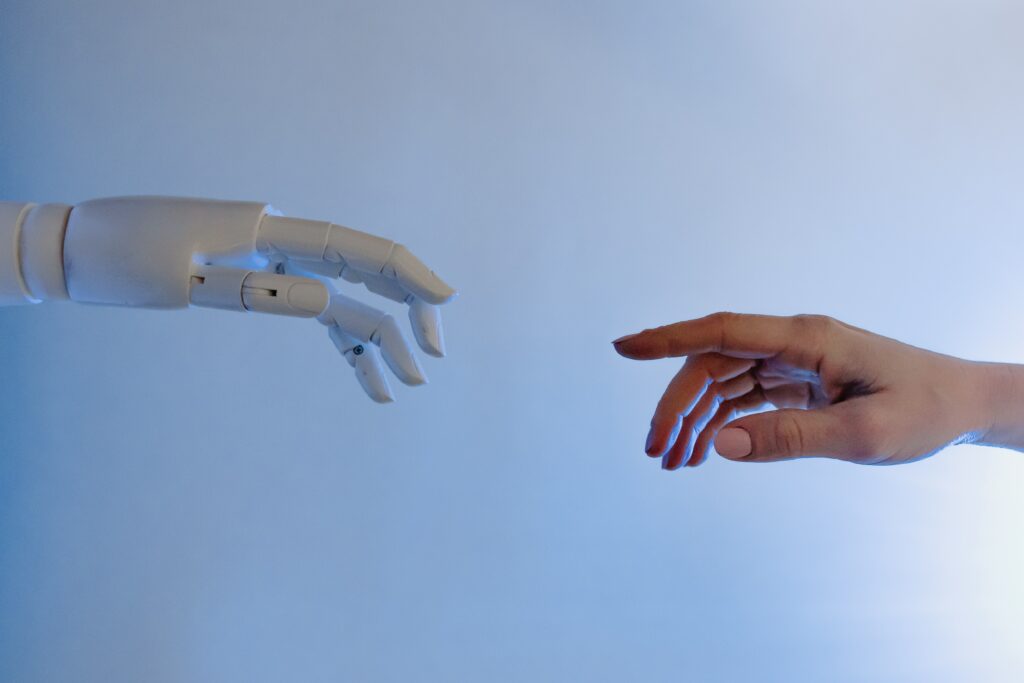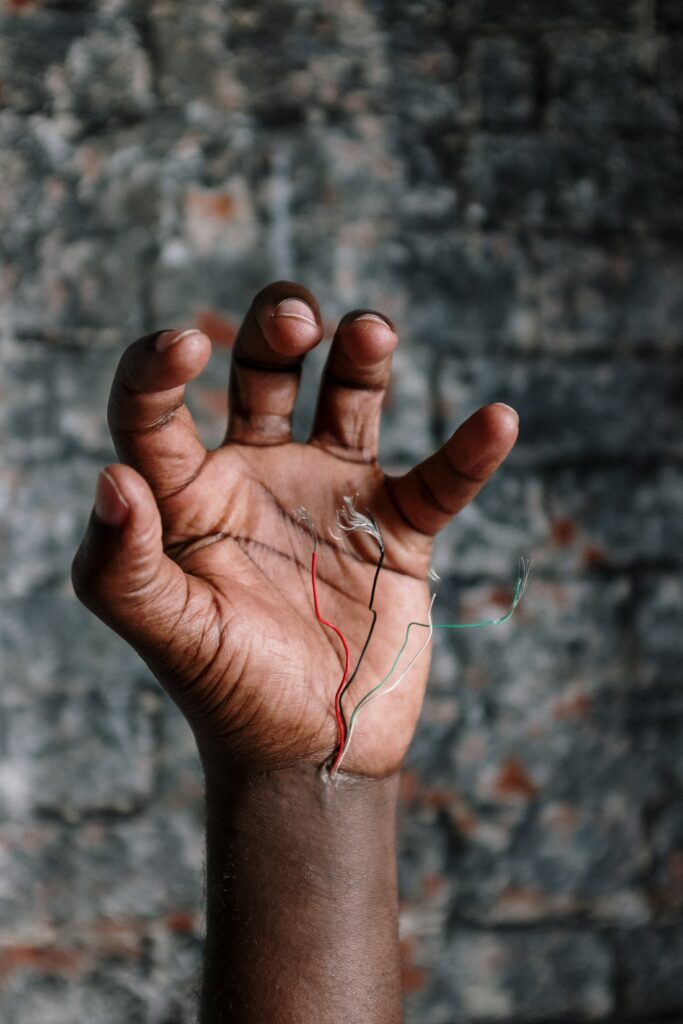Assessing the Merits of New Tech for Educational Purposes
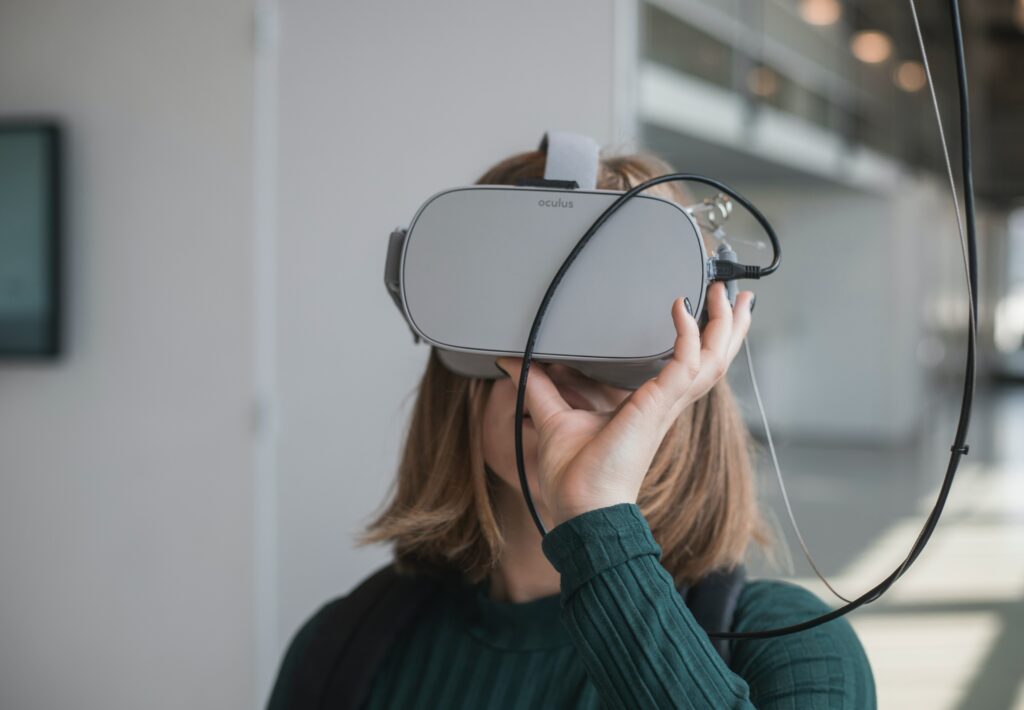
This week we talked about SAMR, a fantastic tool that can be used when assessing if any given new piece of technology will bring worthwhile value to the classroom space. Take a look at the infographic that I created on Canva below for more information on what SAMR is all about:
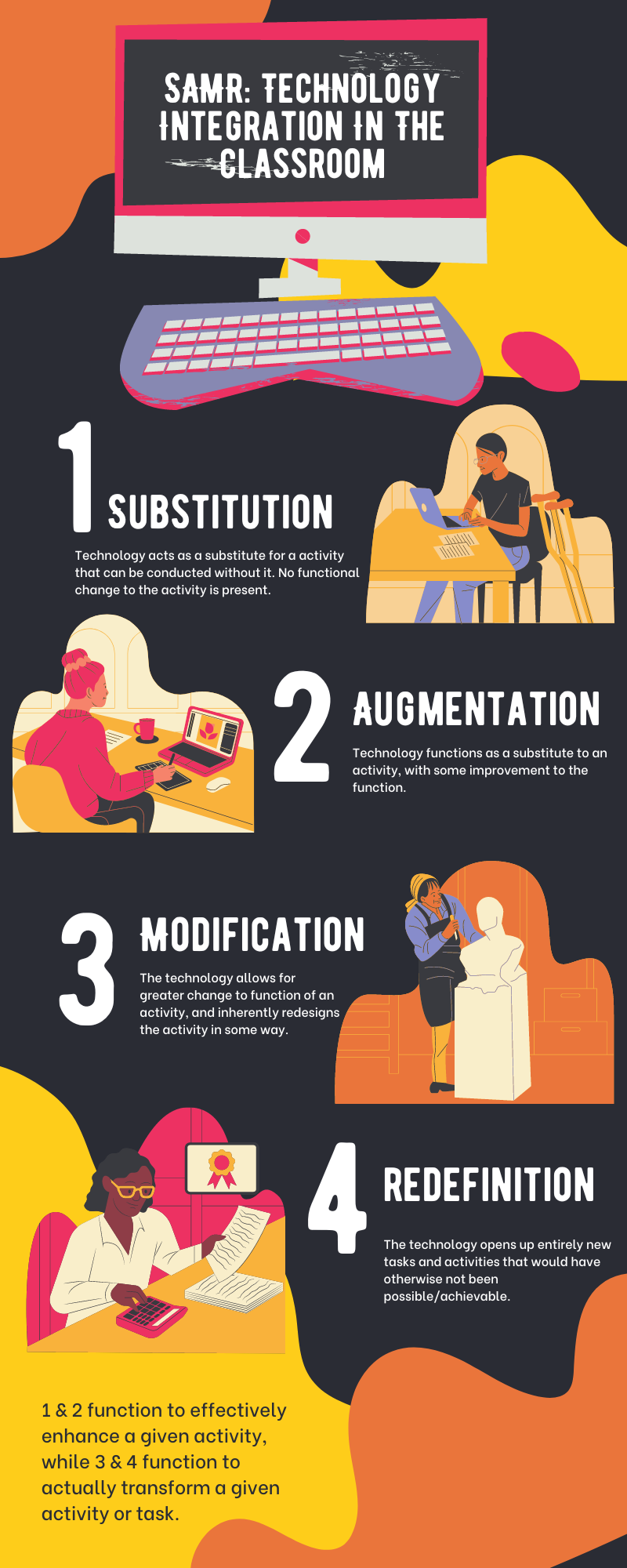
As established above, technology that functions as a substitution or to augment (and thus to improve upon in some way) another activity or task, has less overt value than technology that offers a greater modification or redefinition that greatly enhances or alters said activity or task. This SAMR model is useful in that, as educators, it is important that we weigh new technology against cost barriers and time barriers (with regards to installation, the learning curve for students and teachers, etc) when integrating new technology into the classroom.
These considerations will definitely help me when I am a teacher myself, and faced with the choice of bringing in new technology or sticking with the technology that is readily available to me. While much of SAMR feels intuitive, I do think there is value in comparing technology against a credible tool, both for my own purposes, and to be able to advocate for the value of new technology to administrators and parents alike.
Technology ≠ Electronics (Not Always, Anyways)
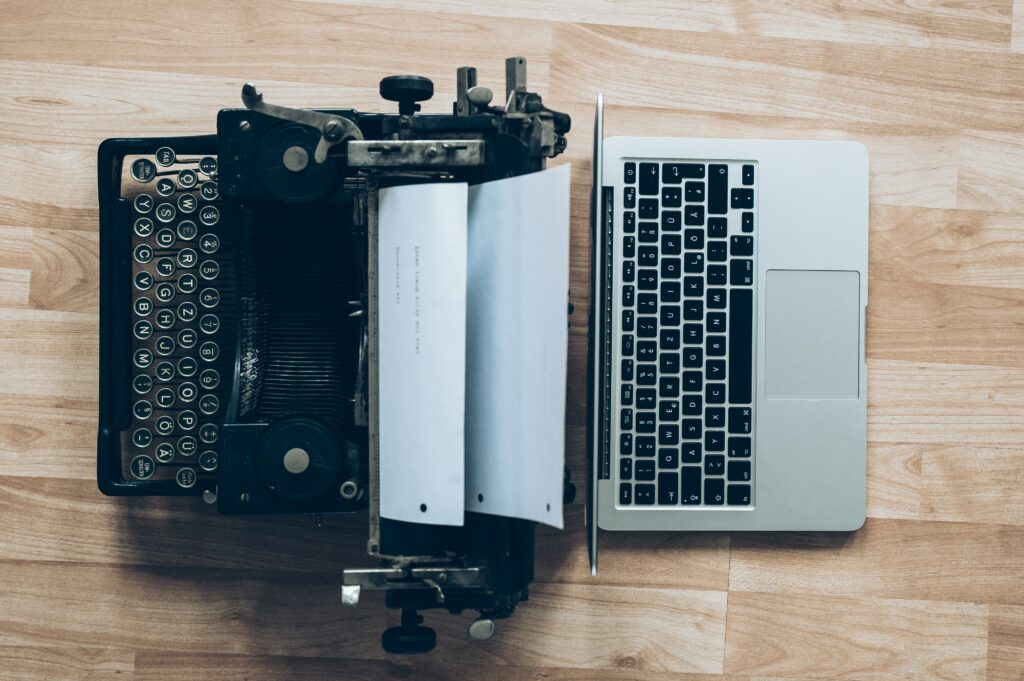
This week we also learned about Sketchnoting, which is a method of note-taking that focuses on using key images and ideas of important subject matter as an alternative (and arguably better) version of the traditional text-heavy note-taking formula. The idea here is that sketched images can help boost the note-taker’s retention of the subject matter at hand, and that when paired with key written information (that may provide necessary context or clarification for the given images), learners have a more engaging, efficient and effective method of taking notes.
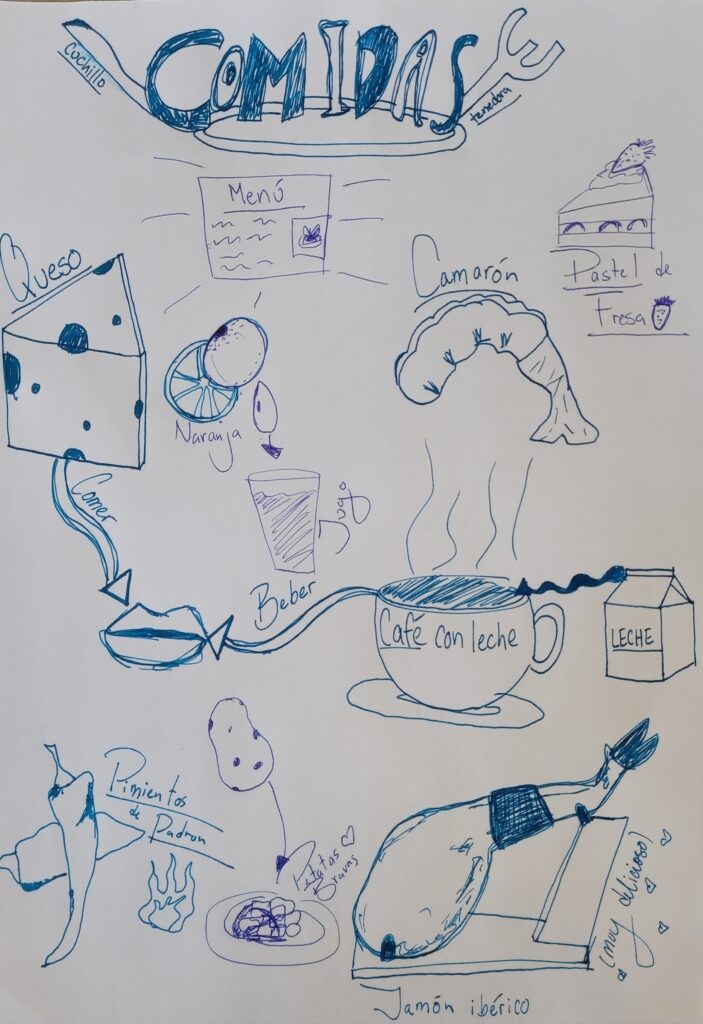
I made the Sketchnote above in class this previous Friday as a method of documenting some important food-related Spanish words. While the above example is more detailed than I would expect of any of my students, I can absolutely see myself integrating sketch-note projects into various content-heavy subjects where understanding is key (science, math, social studies, etc.). The cross-curricular elements of art and writing appeal to me from a cross-curricular standpoint, but also from an assessment standpoint, as student-made Sketchnotes could be a great way to check for student understanding of a given subject (formative assessment). I appreciate as well that Sketchnotes could be used as reference points for students throughout a unit, and even compiled into their own, year-long Sketchnote portfolios.
What do you think about the role of SAMR for educators, and the integration of Sketchnoting for elementary school students? Drop me a comment to check in!

